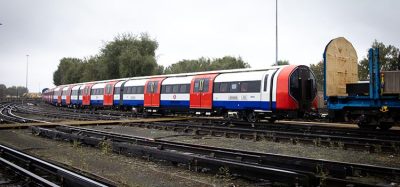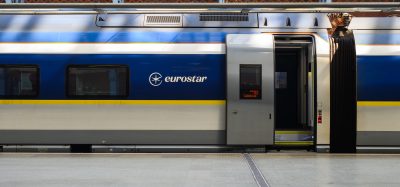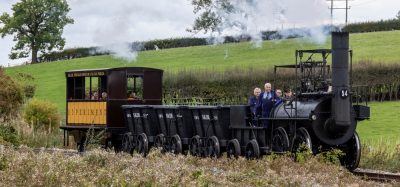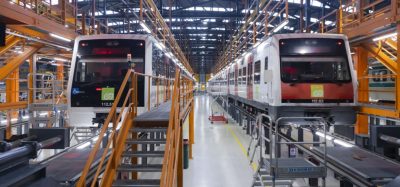OFF THE RAILS: Rail Baltic Estonia’s Environmental Expert Kati Saarem
Posted: 11 April 2024 | Emily Budgen | No comments yet
In this week’s ‘Off the Rails’, I spoke to Rail Baltica’s Environmental Expert, Kati Saarem, hearing all about RB’s sustainability aims.
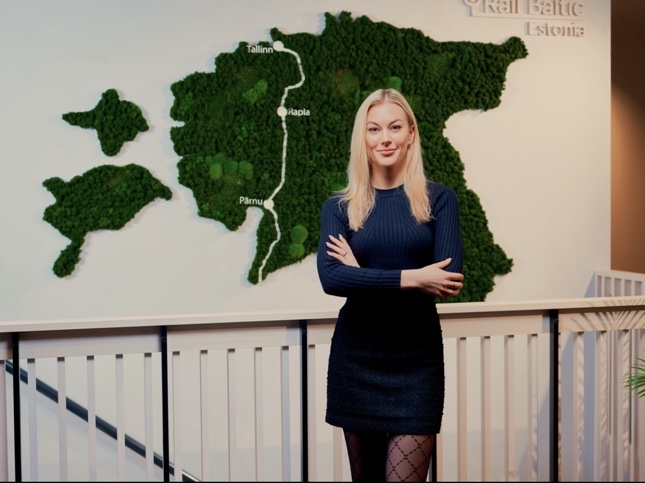

What was your route into rail?
My route into rail was not planned. When I started in Rail Baltica, I had no prior experience in the railway sector, but I had a great desire to be part of the process of planning and building the railway. I studied chemistry and environmental technology and I had a strong chemistry background.
Since I was very interested in environmental topics, I decided to continue my studies in the field of environmental management and technology in my master’s degree. My interest at university was to deal with the creation of environmental management systems and the assessment of life cycles processes more thoroughly. So, everything has happened naturally and I am very happy that I got involved in such an awesome project as Rail Baltica! Before Rail Baltica I was also working in the public sector and gained valuable experience at the local government level.
What are three characteristics you believe are integral to someone interested in working in rail?
I think the most important characteristics are ambition and drive! Of course, technical background and passion for transportation and logistics are crucial.
Also, Working in the railway sector requires project management skills and detail in checking and evaluating projects on a daily basis.
What is an internal environmental process Rail Baltica implements, and why is it important?
With an internal environmental process, I highlight the preparation of environmental management plans for construction sites. This process was created by Rail Baltica Estonia’s environmental team and aims to manage the environmental and sustainability aspects of construction sites.
The environmental management plan brings together specific environmental aspects of the project, which the contractor must consider during the construction process. Every environmental measure is necessary before starting construction work. What is specific to Rail Baltica is that we devote a great amount of attention to the preservation of biodiversity during the project. At this point, we are definitely the trendsetters in Estonia, and we are creating a new practice and quality in the construction landscape, how to manage environmental processes before and during construction.
What is ‘social sustainability’?
For me the meaning of social sustainability lies in responsible management and consideration of the opinions of different groups of people, as well as contributing to the welfare of employees and equal rights. A company’s social sustainability can be seen through stakeholders, communities, workers, and suppliers.
Immediately I think of keywords such as, human rights, responsible supply chain, data privacy, fair wages, diversity, and equal opportunities. A lot of attention is given to social sustainability, and this is also encouraged by the ESRS reporting obligation for larger and smaller companies throughout the supply chain. Rail Baltica is committed to promoting social sustainability, which means that we want to ensure accessibility for all users, including people with disabilities, and promote economic development in the areas that Rail Baltica will serve in the future.
It is very important for us to contribute to the development of our employees as well. We pay a lot of attention to employee training in our office and increase general environmental awareness.
How does Rail Baltica work with local communities to be environmentally responsible?
Rail Baltica recognises the importance of working collaboratively with local communities by actively involving stakeholders, conducting thorough environmental assessments, implementing mitigation measures, and delivering community benefits, the project aims to minimise its environmental footprint and maximise its positive impact on the regions it serves.
What is a ‘green office’ policy and how do Rail Baltica practise this?
Before introducing the green office system, I would like to point out that our organisation is also developing an Environmental Management system. So, when talking about a green office, I would like to draw comparisons here between on two environmental management systems based on their different purpose and focus.
Environmental Management system is a structured framework implemented by organisations to manage their environmental impacts systematically and continuously improve their environmental performance, based on ISO 14001. Green Office System focuses specifically on promoting environmentally friendly practices within office environments to reduce environmental impacts and enhance sustainability.
Since we are building a sustainable railway, it is important that our employees also feel that we contribute to these ideas on a daily basis. A Green Office can be seen as a way of thinking to consume less, consume wisely and think through your processes from an environmental perspective. At Rail Baltica, we pay attention to sorting our waste and reducing the overall amount of it. It is also important for us to prefer sustainable transport and move more greenly. The main goal is raising awareness and continuous training of our employees.
What is Rail Baltica’s environmental target?
In terms of sustainability, the focus of the Rail Baltica project is to build a railway running on 100% renewable energy. At the same time, shift freight and passenger transport from road to rail, thereby reducing greenhouse gas emissions, and contributing to the transition to more environmentally friendly transport.
How have Rail Baltica adapted their designs to help the local fauna?
This is a very important and large part of the Rail Baltica project. Usually, wildlife is not considered on such a scale when planning infrastructure projects. In the Rail Baltica project, we also pay great attention to the restoration and compensation of areas. Rail Baltica has implemented various design adaptations to mitigate its impact on local fauna and promote biodiversity conservation along the rail corridor. In addition, ecoducts are planned for the route in order to preserve the movement possibilities of wild animals and reduce the fragmentation effect.
Is there an environmental innovation you would like to see in the future?
First of all, I’m really looking forward to the completion of Rail Baltica and can’t wait to use it! Also, now is the most exciting time in the field of sustainability, and it’s so interesting to see how different organisations address and implement aspects related to sustainability in the next few years.
This year, 2024, is Global Railway Review’s thirtieth birthday, its pearl anniversary. Do you have a pearl of wisdom for us today?
Let us uphold social responsibility, environmental stewardship and embrace diversity!
More Like This
OFF THE RAILS: RIA’s Chief Executive Darren Caplan
OFF THE RAILS: Worldline’s Martin Howell
OFF THE RAILS: GBRTT’s Emily Lightowler
OUT NOW: The Definitive Guide to Rail’s Digital Future
The rail industry is undergoing a digital revolution, and you need to be ready. We have released our latest market report, “Track Insight: Digitalisation.”
This is not just another report; it’s your comprehensive guide to understanding and leveraging the profound technological shifts reshaping our industry. We move beyond the buzzwords to show you the tangible realities of AI, IoT, and advanced data analytics in rail.
Discover how to:
- Optimise operations and maintenance with real-time insights.
- Enhance passenger services through seamless, high-speed connectivity.
- Leverage technologies like LEO satellites to improve safety and efficiency.
Featuring expert analysis from leaders at Nomad Digital, Lucchini RS, Bentley Systems and more, this is a must-read for any rail professional.
Related topics
Cargo, Freight & Heavy-Haul, Freight, Infrastructure Developments, Noise & Vibrations, Operational Performance, Passenger Experience/Satisfaction, Route Development, Sustainability/Decarbonisation, The Supply Chain, The Workforce, Track Construction, Track/Infrastructure Maintenance & Engineering



